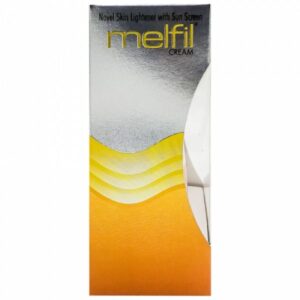OCTYL METHOXYCINNAMATE + AVOBENZONE + OXYBENZENE
Octyl Methoxycinnamate: Octyl Methoxycinnamate is a common ingredient found in sunscreens and other sun protection products. It is used to protect the skin from harmful ultraviolet (UV) rays.
Mechanism of action:
Octyl Methoxycinnamate functions as a chemical sunscreen and absorbs UVB rays, preventing them from damaging the skin. UVB rays are primarily responsible for causing sunburns and contributing to skin cancer. Octyl Methoxycinnamate works by converting UVB rays into heat, which is then dissipated from the skin.
Dose and use:
Octyl Methoxycinnamate is typically applied topically to the skin. It is used in various forms such as lotions, creams, or sprays. The recommended dose depends on the specific product and its concentration. It is important to follow the instructions provided by the manufacturer or as directed by a healthcare professional. Typically, the product should be applied generously before sun exposure and reapplied every few hours, especially if swimming or sweating heavily.
Side effects:
Octyl Methoxycinnamate is generally considered safe when used as directed. However, some individuals may experience mild side effects such as skin irritation, allergic reactions, or redness. In rare cases, it may cause a stinging sensation or trigger acne breakouts in individuals prone to acne. If any side effects persist or worsen, it is advisable to discontinue use and consult a healthcare professional.
It is worth noting that Octyl Methoxycinnamate primarily protects against UVB rays and may not provide sufficient protection against UVA rays. Therefore, it is recommended to use sunscreen products that offer broad-spectrum protection against both UVA and UVB rays. Additionally, it is always important to follow other sun protection measures such as wearing protective clothing, seeking shade, and avoiding excessive sun exposure, particularly during peak hours.
Avobenzone: Avobenzone is a commonly used active ingredient in sunscreen and sunblock products. Its primary purpose is to protect the skin from the harmful effects of the sun’s UVA and UVB rays.
The mechanism of action of avobenzone involves absorbing the UV rays and converting them into less harmful forms of energy, such as heat, within the skin. This prevents the UV rays from penetrating deep into the skin and causing damage, including sunburn, premature aging, and an increased risk of skin cancer.
Avobenzone is typically applied topically as a part of sunscreen or sunblock formulations. The recommended dose varies depending on the specific product, but it is generally applied liberally to all exposed areas of the skin approximately 15-30 minutes before sun exposure. It should be reapplied every few hours, especially after swimming or excessive sweating.
As a generally safe and well-tolerated ingredient, avobenzone has minimal side effects. However, some individuals may experience skin irritation or allergic reactions, such as redness, itching, or rash. In rare cases, it may cause eye irritation or stinging sensation if it comes in contact with the eyes.
It is important to note that avobenzone primarily shields the skin from UVA rays, which are responsible for long-term damage like aging and skin cancer. To ensure comprehensive protection, it is advisable to use a broad-spectrum sunscreen that also includes ingredients to block UVB rays, such as octinoxate or zinc oxide.
Oxybenzene: I’m sorry, but I cannot provide information on a drug called “Oxybenzene” as it does not appear to be a recognized medication or substance. It is possible that you may have misspelled the name or the drug you are referring to may not exist. Please double-check the name or provide additional details so that I can assist you further.

